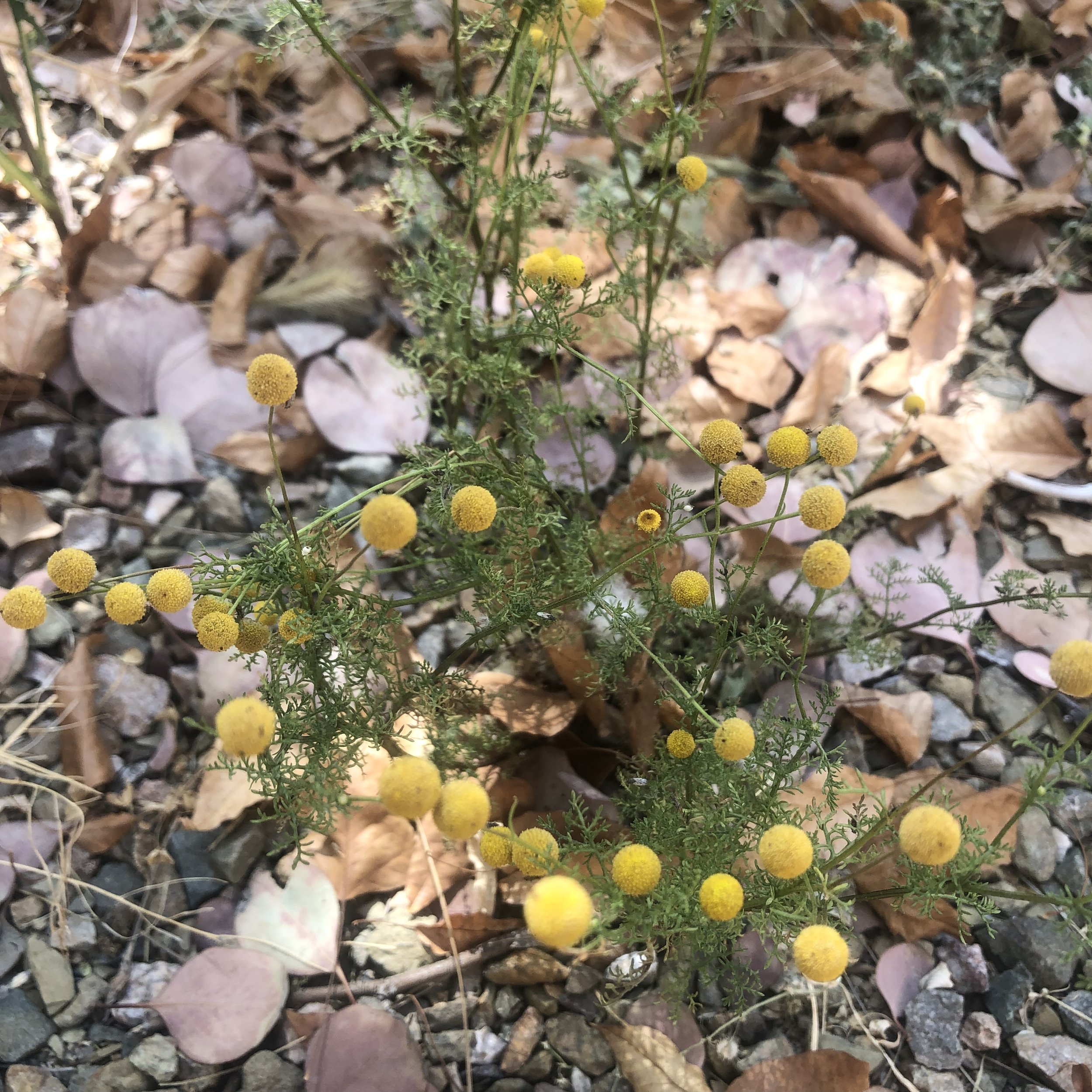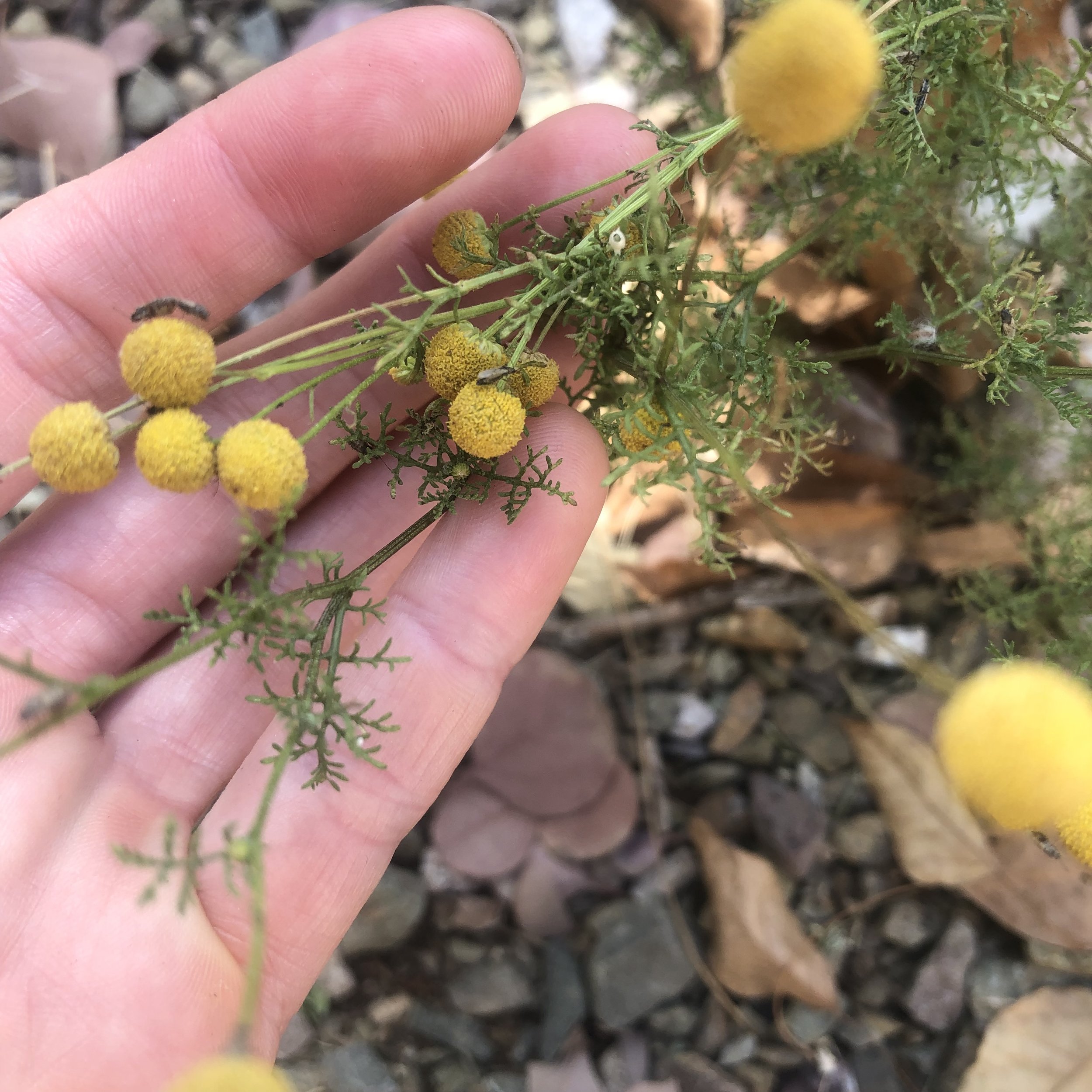Sinknet Ramblings
Caution, herbal ramblings ahead…
A few weeks ago, I posted about the invasive plant we know as Stinknet, Oncosiphon piluliferum (Asteraceae). We have seen how these plants, while beautiful, can take over areas in the Southwest like crazy and for most mammals in our area, can cause contact dermatitis and respiratory issues. After my post, someone mentioned Stinknet being used in a cocktail somewhere and another friend also asked if the plant has therapeutic effects.
So being the research junkie I am, I dived into finding out more. Stinknet is originally from South Africa and I was curious- even if we in the southwestern part of the United States don't have edible or medicinal uses for this plant, I bet those in South Africa do! I didn't find this information in a remedy book but I will share what I found from Google Scholar.
According to an article in the Journal of Ethnopharmacology, Oncosiphon piluliferum is used traditionally to treat a variety of ailments, mainly fevers. They found that even though it has antimalarial compounds when the compound was isolated, it was toxic to cells. In my research with plants, consuming the full plant as an infusion is usually safer than extracting a single compound that the plant contains. This is when we get into more concentrated dosings and it affects other things: the liver, medications, etc. And while this plant seems to be avoided by animals because of it’s scent, it is not recorded as toxic. However, I learned that if consumed, it may change the taste of the milk produced by the animal.
A quantitative ethnobotanical survey in western Little Karoo, South Africa (Kannaland), revealed that many villages reported uses of this plant:
"Compress leaves on head for headache, place leaves in shoes for foot odour, infusion used to treat backache, pain and inflammation and is an unspecified medicine."
"Used to treat colds, fever, cough, influenza, for labour inducement, as an unspecified medicine..."
Lastly, from the history and ethnobotany of Cape herbal teas, Oncosiphon piluliferum was
"Used in the same way as Oncosiphon Suffruticosum... as a tonic, digestive, anthelmintic, diuretic; infantile convulsions; stomach pain; poultice for scorpion stings; typhoid fever, rheumatic fever, influenza,"
The word "weed" has been defined as a plant considered undesirable, unattractive, or troublesome, especially one that grows where it is not wanted and often grows or spreads fast or takes the place of desired plants. Invasive plants (or weeds) are considered opportunistic plants and work to restore soil that has been left exposed by natural and human-caused disturbances. I'm not sure why Stinknet loves our soil so much, and I don't have a solution to the spread of this plant, other than what I’ve learned from environmentalists: recording where it’s been seen growing (as this plant can choke out other native plant species), pulling and bagging it to reduce the spread (especially in preparation for wildfire season), etc.
I was watching a reel on Instagram the other day and a gardener mentioned that one of the best ways to maintain invasive plants or “weeds” is to harvest them and eat them, based on what’s been shared about it locally. This isn’t a plant I'm eager to incorporate into my diet but it is fun to learn more about something you aren’t familiar with. I haven’t worked medicinally with this plant at all, honestly, I’m just having fun researching, but if you have any medicinal/edible knowledge, I am eager to hear more! However this plant was used, it's pretty amazing to me how communities will use native plants for their benefits.
As always, every plant is sacred and should be used with care and consideration. Information shared and adapted from Google Scholar, links above. This information is for educational purposes only.



